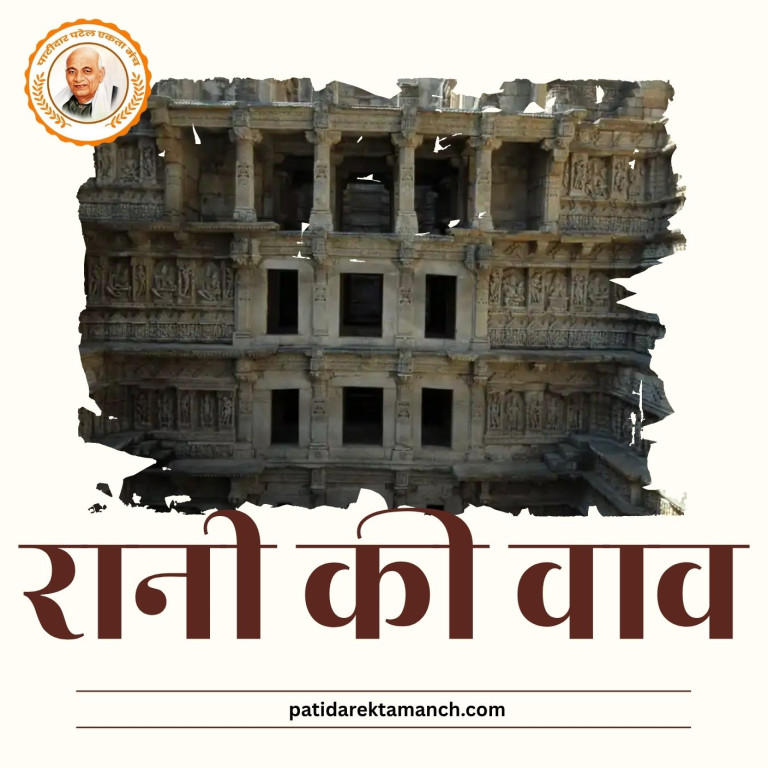
Rani Ki Vav Patan history
Rani Ki Vav
Rani Ki Vav is a famous stepwell located in Patan, in the state of Gujarat, India. This image was featured on the ₹100 note by the Reserve Bank of India (RBI) in July 2018, and on 22 June 2014, it was included in the UNESCO World Heritage Sites list.
Patan was earlier known as Anhilpur, which used to be the former capital of Gujarat. It is said that Rani Ki Vav (stepwell) was built in the year 1063 by Queen Udayamati in loving memory of her husband, King Bhimdev I of the Solanki dynasty. Queen Udayamati was the daughter of Ra Khengar (Khengar), the Chudasama ruler of Junagadh. The founder of the Solanki dynasty was Mularaja.
At one time, the stepwell’s steps were filled with silt due to the waters of the Saraswati River. The stepwell is 64 meters long, 20 meters wide, and 27 meters deep. It is a unique stepwell of its kind in India.
The pillars of the vav take us back to the era of the Solanki dynasty and its architectural marvels. Most of the carvings on the walls and pillars are dedicated to Lord Vishnu, depicted in various forms such as Rama, Vamana, Mahishasuramardini, Kalki, and other avatars.
The formal announcement of including 'Rani Ki Vav' in the new list of World Heritage Sites has been made. Built in the 11th century, the UNESCO World Heritage Committee has also given it the title of the 'Queen' among all stepwells in India. It is considered an excellent example of the use of groundwater resources in a water management system. This 11th-century Indian subterranean architectural structure is the most advanced and elaborate example of its unique kind, showcasing the story of the development of stepwell construction in India.
This seven-story stepwell is a testimony to the Maru-Gurjara style. For nearly seven centuries, it remained buried under silt after the disappearance of the Saraswati River. It was rediscovered by the Archaeological Survey of India (ASI). In collaboration with CyArk and Scottish Ten, ASI has also digitized the documentation of the stepwell.
Rani Ki Vav is preserved with all its major architectural components, and despite the absence of the floors of the mandapa (pavilion), its original form and design can still be easily recognized. Most of the sculptures and decorative panels remain in place, with some being exceptionally well-preserved. Rani Ki Vav is a complete example of the stepwell tradition, although it no longer functions as a water well due to changes in the riverbed of the Saraswati River after tectonic shifts in the 13th century. Interestingly, the silt deposited during the floods caused by this historic event preserved Rani Ki Vav in an extraordinary condition for more than seven centuries.
The vertical architecture of the stepwell, along with the surrounding soil, is included within the property. In terms of integrity, it appears that since the floods and silt deposition in the 13th century, no major damage has occurred to the property. However, like many Indian urban centers, Patan is experiencing rapid urban development, and in the future, the western expansion of the city toward Rani Ki Vav must be carefully controlled to safeguard its integrity.
Rani Ki Vav maintains a high degree of authenticity in terms of material, substance, design, craftsmanship, and, to some extent, atmosphere, setting, and surroundings. Although it has retained its authentic materials and substance, timely reconstruction was necessary for structural stability. In all cases, reconstructed elements were added only where structurally necessary to protect the remaining sculptures, and they are characterized by smooth surfaces and the absence of ornamentation, making them easily distinguishable from the historical elements.
Around the outer plinth at ground level, a smooth slope—called the Bali Chabutra—was constructed to prevent soil erosion after heavy rains. Unfortunately, due to changes in the groundwater level following the shift in the Saraswati River’s course, Rani Ki Vav could not retain its authenticity of use and function.
8th August, 2025
